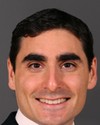Thank you.
Good afternoon, Madam Chair.
The Canadian Medical Association is pleased to address the committee as part of its ongoing study of H1N1 planning and response.
In the broad context of pandemic planning, the CMA has focused on developing information and education tools on its website to ensure that Canada's doctors are equipped to provide the best possible care to patients. We have also engaged in discussion with the Assembly of First Nations to address workforce shortages in first nations and Inuit communities during a pandemic. Despite the work of governments and others, there remains much to do.
To provide optimal patient care, individual physicians--primary care providers and specialists alike--require regular updates on the status of H1N1 in their communities; timely and easy access to diagnostic treatment recommendations, with clear messages tailored to their service levels; rapid responses to questions; and adequate supplies of key resources such as masks, medications, diagnostic kits, and vaccines.
The CMA commends federal, provincial, and territorial governments for creating the Canadian pandemic influenza plan for the health care sector. The CMA was pleased to provide feedback on elements of the plan, and we are participating on the antiviral and clinical care task groups.
There are three issues that still must be addressed: the communications gap between public health officials and front-line providers; the lack of adequate resources on the front lines; and variability that exists across the country.
Physicians must be involved in the planning stages and must receive consistent, timely, and practical plain-language information. They should not have to seek out information from various websites or other sources, or through the media. This communication gap also includes a gap between information and action. For example, we are told to keep at least a six-foot distance between an infected patient and other patients and staff. This will not be possible in a doctor's waiting room, nor will disinfecting examining and waiting rooms in between each patient.
Patient volumes may increase dramatically, and there are serious concerns about how to manage supplies if an office is overwhelmed. There is also considerable concern over whether we can keep enough health care professionals healthy to care for patients and whether we have enough respirators and specialty equipment to treat patients.
Intensive care units of hospitals can also expect to be severely strained as a second-wave pandemic hits. This speaks to a general lack of surge capacity within the system. Also, pandemic planning for ICUs and other hospital units must include protocols to determine which patients can benefit most when there are not enough respirators and personnel to provide the required care for all who need it.
Beyond the need for more supplies, however, there is also the concern that there are only so many hours in a day. Doctors will always strive to provide care for those who need it, but if treating H1N1 cases takes all of our time, who will be available to care for patients with other conditions?
The CMA has consulted with provincial and territorial medical associations. Their levels of involvement in government planning and general state of preparedness vary greatly. There is also marked inconsistency from province to province around immunization schedules. We need a clear statement of recommendation to clear up this variability.
In summary, there remains a great deal of uncertainty among physicians about the vaccine, the supply of antivirals, the role of assessment centres and mass immunization clinics, delegated acts, and physicians' medical-legal obligations and protections. The bottom line is that there is still more work to do at all levels before front-line clinicians feel well prepared with the information, tools, and strategies they need.
The CMA was pleased to meet with Dr. Butler-Jones to discuss our concerns last week, and we will continue to work closely with the Public Health Agency of Canada to identify gaps and to prepare user-friendly information for clinicians.
Thank you, and I welcome any questions.




